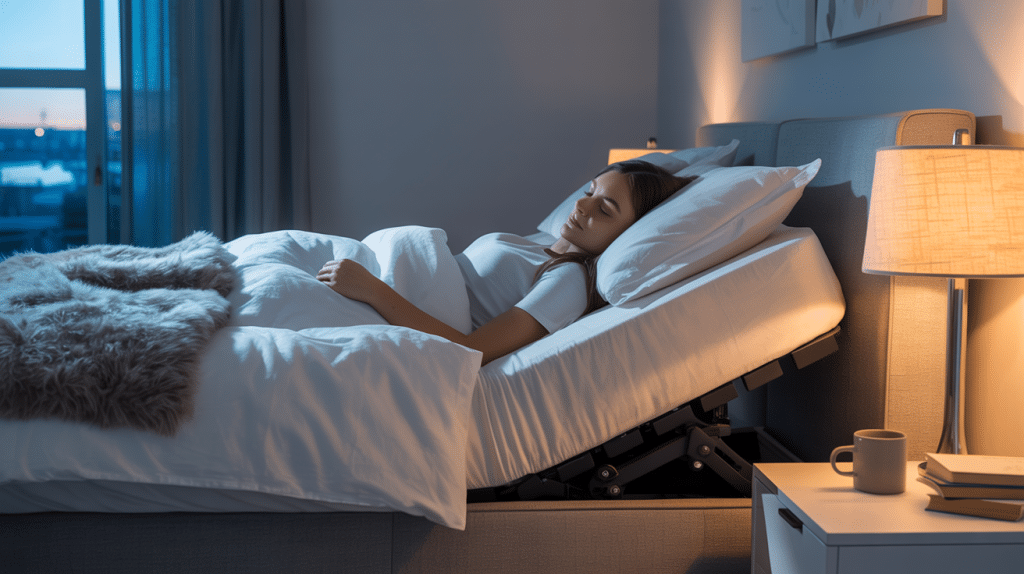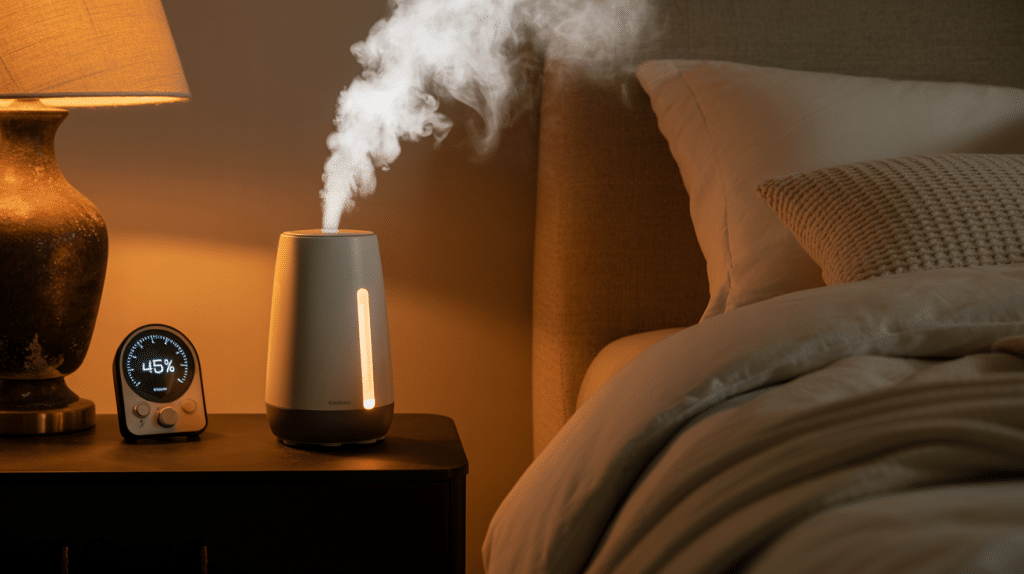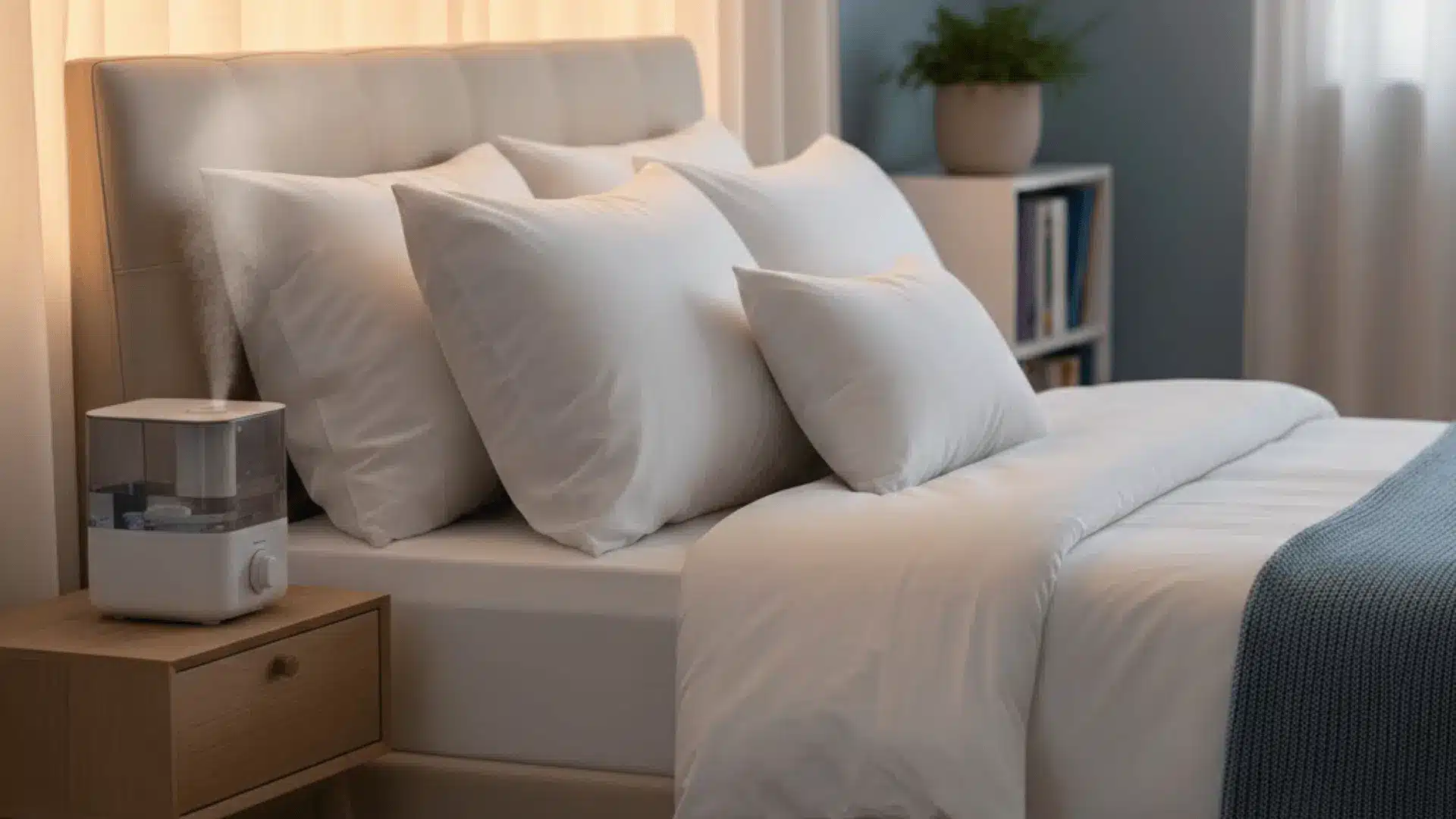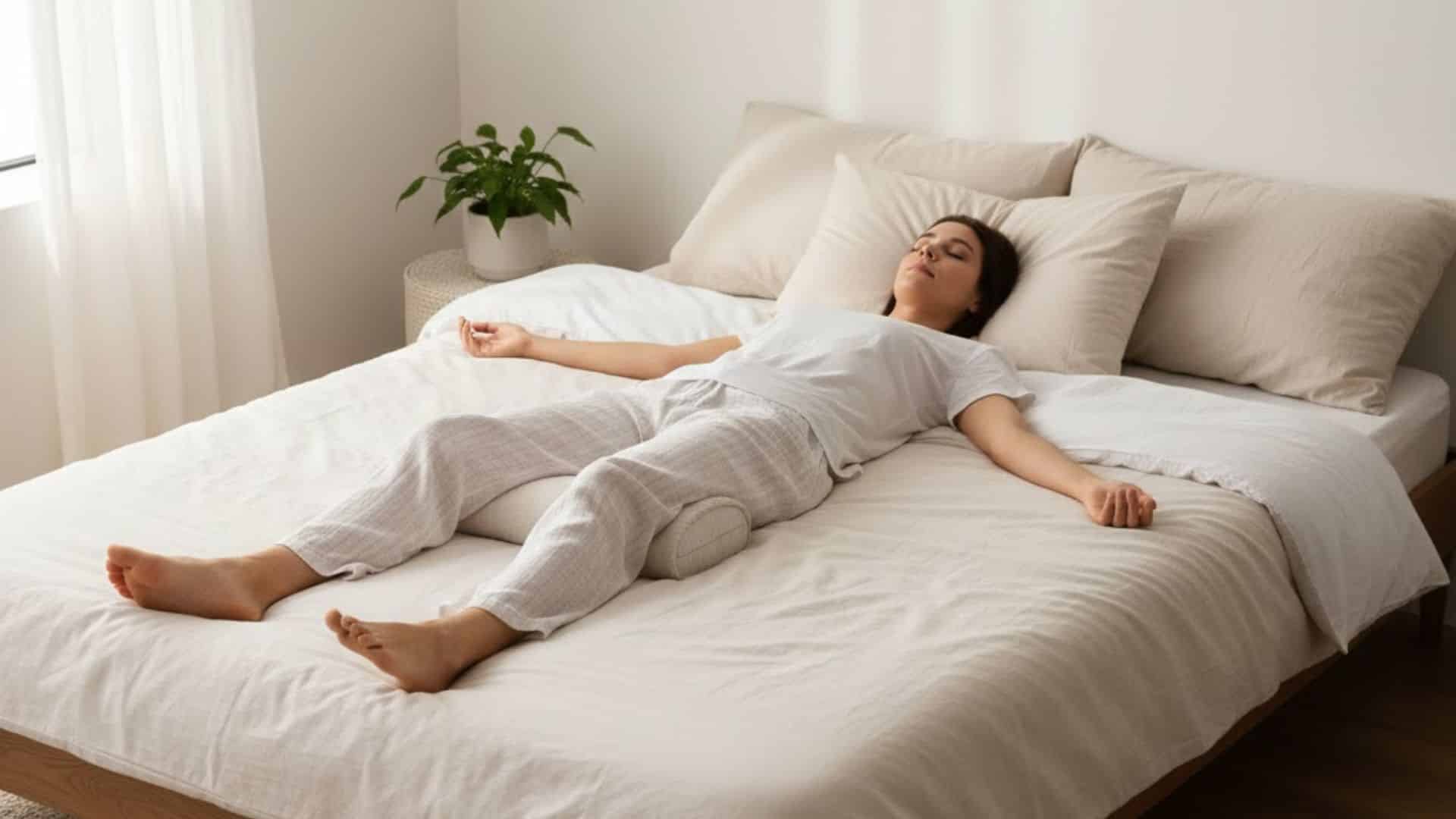I’ve had nights where I went to bed breathing just fine, but woke up with one side of my nose completely blocked. It’s frustrating. If you’ve been through it too, a crooked nasal wall might be the reason, especially since it can make airflow harder at night.
The good news is that finding the best sleep position for deviated septum issues can significantly improve your breathing and rest.
Here, I’ll share the positions that have worked best for me, a few easy breathing tricks, and common mistakes to avoid so you can sleep more comfortably.
Let’s figure out which position helps you wake up clear-headed and refreshed.
How a Deviated Septum Affects Breathing In Sleep
Your nose has two tunnels separated by a thin wall called the septum. When you breathe in, air should flow easily through both sides.
But with a deviated septum, that wall is bent or crooked, making one tunnel much smaller than the other. At night, this gets even worse because everything in your nose naturally swells up a bit when you lie down.
Here’s what happens almost every night: your nose gets completely stuffed up on one side, you end up breathing through your mouth, which makes it dry and gross, you snore way more than usual, you wake up multiple times feeling like you can’t get enough air, and you get morning headaches from poor sleep.
This creates a frustrating cycle where bad breathing leads to bad sleep, which makes you feel tired and cranky the next day.
Best Sleep Positions for Deviated Septum Pain Relief
Finding the right sleep position can be the difference between a miserable night and actually getting some rest. Here are the five most important positions to know about:
Side Sleeping (Preferred)
Side sleeping is hands down the best option for most people dealing with a deviated septum. Try and sleep in these positions as much as possible for improved airway and smooth breathing.
1. Sleep on Your “Good” Side

Side sleeping is the winner for most people with a deviated septum. When you sleep on the side that breathes better, gravity helps keep that passage open instead of working against you.
Your blocked side gets relief from pressure, and your good side stays clear. It’s like giving your nose the best chance to do its job while you sleep.
2. Sleep on Your “Bad” Side (Sometimes)

This might sound backward, but sometimes sleeping on your more blocked side can actually help. It forces the swollen tissues to drain away from that passage.
Think of it like tilting a clogged bottle to help the liquid flow out. Try both sides for a few nights to see which one helps you breathe easier and sleep better.
Elevated Back Sleeping
If you can’t sleep on your side, the next best thing is sleeping on your back with your head raised up.
3. Prop Yourself Up with Pillows

If you absolutely must sleep on your back, stack 2-3 pillows to lift your head and chest up. This helps gravity drain fluids away from your nose instead of pooling them there.
It’s not as good as side sleeping, but it’s way better than lying completely flat. Just make sure your neck doesn’t get too bent or you’ll wake up sore.
4. Use an Adjustable Bed

An adjustable bed lets you lift your upper body at just the right angle without awkward pillow stacking. Most people find 30-45 degrees works best.
You get the benefits of elevation without neck strain or pillows falling everywhere. It’s more expensive than extra pillows, but it can be a game-changer for breathing and comfort throughout the night.
Positions to Avoid
Some sleeping positions will make your deviated septum symptoms much worse. Try and avoid them as much as possible.
5. Never Sleep Completely Flat

Sleeping flat on your back is the worst position for a deviated septum. Gravity works directly against you, pushing all the blood and swelling right into your already narrow nasal passages.
You’ll wake up more congested, which will result in deviated septum snoring, and probably breathe through your mouth all night. Your sleep quality suffers, and you’ll feel terrible in the morning.
Remember, everyone’s septum is different, so what works for others might not work for you. Experiment with these positions to find your perfect sleep setup.
Why Sleeping Position Matters
Here’s something most people don’t know: how you position your body in bed can make your deviated septum way better or way worse. Here are three key things to understand:
Lying flat makes things worse. When you sleep on your back, gravity pushes blood and fluids down into your nose. This makes everything swell up even more.
It’s like trying to breathe through a straw that someone keeps squeezing tighter.
Your tongue gets in the way. When you’re on your back, your tongue can slide back and block your throat. This makes you snore louder and makes it even harder to breathe.
Pick the right side. If you sleep on the side where your nose is more blocked, you’re making it worse. But if you sleep on the other side, the one that breathes better, you can actually help yourself get more air. It’s that simple, but it makes a huge difference.
Tips to Improve Breathing Comfort at Night
Beyond finding the right sleep position, these simple tricks can make a huge difference in how well you breathe and sleep.
1. Use a Humidifier

Dry air makes everything worse when you have a deviated septum.
Adding moisture to your bedroom air helps keep your nose from drying out and getting even more stuffed up. Dry air makes the inside of your nose crusty and tight, which makes breathing way harder.
A cool-mist humidifier running while you sleep keeps everything nice and moist. You want about 40-50% humidity, not too dry, not too wet like a swamp.
2. Try Nasal Dilators or Strips

These simple tools can open up your breathing passages from the outside.
Nasal strips stick to the outside of your nose and gently pull your nostrils open wider. Nasal dilators go inside your nose and hold open the narrow parts.
Both give you more room for air to get through your already tight passages. They’re cheap, super easy to try, and lots of people feel better right away.
3. Adjust Pillow Height and Support

The right pillow setup can make or break your night’s sleep.
Your head and neck need to be just right to keep your airways open. Too flat and gravity works against you. Too high and your neck hurts, plus your throat gets squeezed.
Try different pillow combos until you find what feels good and helps you breathe. A wedge pillow can help keep the perfect angle all night long.
4. Maintain Good Sleep Hygiene

Creating the right sleep environment helps you rest better despite breathing problems.
Keep your bedroom cool, dark, and quiet so your body can focus on resting and healing. Go to bed and wake up at the same time every day to train your body.
Skip screens, coffee, and big meals before bedtime because they make sleep problems worse. When you sleep better overall, breathing troubles don’t bug you as much.
Common Mistakes to Avoid that People Make
Even when you’re trying to do everything right, it’s easy to make mistakes that actually make your breathing worse at night. Here are some common ones to watch out for:
- Overstacking pillows: Many people believe that piling on tons of pillows will help them breathe better, but this usually backfires. When you stack too many pillows, your neck bends at a weird angle that can actually squeeze your throat closed.
- Switching sides too often in one night: It’s tempting to flip from side to side all night, looking for the magic spot that helps you breathe perfectly. But constantly switching sides means your body never gets a chance to settle and drain properly.
- Ignoring underlying allergies: If you’re allergic to dust, pet hair, or pollen, your nose is already swollen and irritated before you even try to sleep. This makes your already narrow breathing passage even tighter.
Don’t worry if you’ve been making these mistakes; most people do. The good news is they’re all easy fixes that can make tonight better than last night.
When to Seek Medical Help
Sometimes changing sleep position isn’t enough, and that’s okay. See a doctor if you stop breathing during sleep, wake up gasping or choking, or snore loudly, then suddenly go quiet; these can be signs of deviated septum or sleep apnea, which can harm your heart and brain.
If your nose stays blocked every night despite trying home fixes, your septum might be severely crooked and need treatment.
Constant morning headaches, daily fatigue, or feeling exhausted after a full night’s sleep mean your body isn’t getting enough oxygen. Your symptoms are real, and getting medical help can make a huge difference in your breathing and rest.
Conclusion
Finding the best sleep position for a deviated septum doesn’t have to be complicated. Side sleeping on your clearer-breathing side or using pillows to prop yourself up on your back are two of the most effective options.
Experiment with combinations, try a humidifier, nasal strips, or switching sides to see what works best. Everyone’s nose is different, so your perfect setup may not match mine.
If you still deal with constant congestion, loud snoring, or waking up tired every morning, it’s worth seeing a doctor. Better sleep is possible, even with a crooked septum.
For more tips on breathing better, reducing congestion, and improving your sleep, check out my other blogs on the website.









